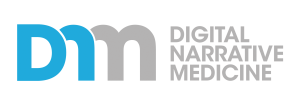La medicina narrativa come strumento di educazione medica
Interessante revisione sistematica della letteratura scientifica sulla medicina narrativa come strumento di educazione medica, mezzo innovativo ed efficace per stimolare lo sviluppo professionale degli studenti di medicina insegnando loro ad avvicinarsi alle esperienze di malattia dei loro pazienti con maggiore comprensione e compassione. Risultati e prospettive in vista di ulteriori prove di efficacia.
Articolo di M. Milota, G.J.M.W van Thiel & J.J.M. van Delden su Medical Teacher
Abstract
Aim: Narrative medicine has been promoted as an innovative and effective means of stimulating medical students’ professional development by teaching them to approach their patients’ experiences of illness with more understanding and compassion. This systematic literature review aims to answer the following question: what evidence of effect is available in the literature about models for teaching narrative medicine?
Methods: We conducted a narrative review of 36 articles and used the Best Evidence in Medical Education (BEME) Global Scale and Kirkpatrick Scale for strength and importance of evidence to categorize reported assessment strategies and to evaluate the effectiveness of their narrative medicine programs.
Results: We found evidence that narrative medicine is an effective pedagogic tool with a clear and replicable structure and methodology. We also determined that a positive impact could be measured when pertaining to participation and modification of attitudes, knowledge, and skills. However, unequivocal evidence of the effect of narrative medicine on students’ behavior or ongoing interaction with colleagues and patients is still lacking.
Conclusion: While many recent publications describe the goals and virtues of a narrative-based approach, more research is needed to determine whether or not there is an ideological consensus undergirding this approach. In addition, it is still unclear whether the long-term impact of narrative medicine classroom interventions are felt by patients, or whether such interventions positively impact patient care.

